Lu Zhongnan: How was my European regular script made?
Mr. Lu Zhongnan is an important contemporary calligrapher. His European regular script incorporates the charm of the "Two Kings", is mellow and elegant, and is well-known in the calligraphy world. So how was his Ou Kai made?
1. When I was about five or six years old, I saw my father buying red copybooks for my sisters to practice calligraphy. I wanted to learn them too. My father was very happy and specially prepared a brush and ink cartridge for me, so I joined them.
Since entering elementary school, my sister and I have painted red every night after finishing our homework. At that time, I also loved painting, and I often painted themes such as ancient military commanders riding horses and fighting on the homework books and on the ground. My father told me very seriously that if you want to practice calligraphy and painting, you can do it, but firstly, you must complete your homework and ensure your studies; secondly, you must persevere to the end and not be distracted or half-hearted. I remember he told me that when he was a child, he often heard adults say that there were three words that were the most difficult to write: "Only when you write Feifengjia well can you boast." Because the strokes of these three words are not only numerous but also have different shapes, making it difficult to grasp. When he is not busy at work, he often takes my sister, brother and I to visit Xu Beihong Memorial Hall, Liulichang and other places on Sundays to broaden our horizons.
Later, I became more and more interested in writing and painting, and my father was very happy, but he still had strict requirements on me. After seeing my paintings, an uncle in the agency once told my father that he would recommend me to study under an art academy, but my father refused at that time. He thinks that I am still young and should learn more about culture. Children cannot do it without laying a good foundation. Although there were no TVs, computers, or game consoles at that time, it was very happy to play hide-and-seek and war games with the children in the yard after finishing homework. Like other children of the same age, I would not sit on the bench and write in big characters for a period of time. Of course, I would be beaten and criticized by my father several times.
In the 1950s and 1960s, primary schools had one or two large-character classes every week. The person who taught us how to write big characters was an amiable female teacher named Wang. Every time she walked into the classroom, she always held a white paint bottle and a brush in one hand, and a small blackboard with red borders in the other hand. She wrote four big characters from Ouyang Xun's "Jiucheng Palace Liquan Ming" on the small blackboard for us to write. She also patiently tutored us and encouraged us to practice calligraphy well and serve the motherland in the future. At that time, she was my "idol". When I watched Teacher Wang write, I was always distracted, always thinking, when will I be able to write as well as her?
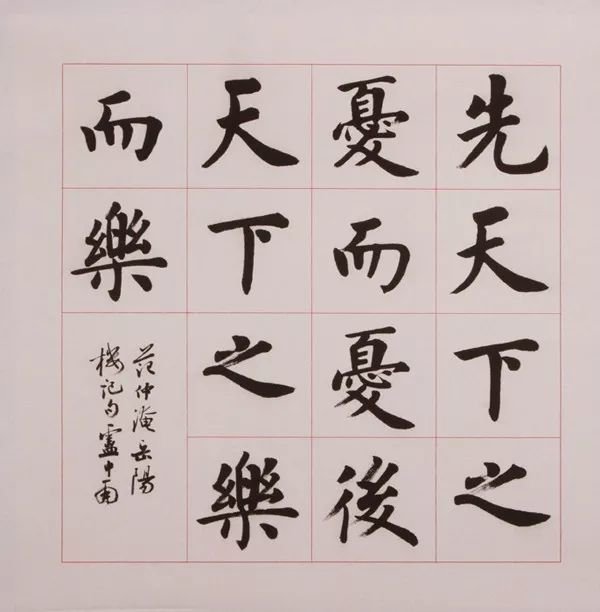
In 1964, I was admitted to Beijing No. 3 Middle School. The first grade of junior high school naturally has more homework than that of primary school, but there is still a large-character class every week. A gentleman named An taught us calligraphy class. He was tall and wore black-rimmed glasses. I remember that in the first class, after he introduced himself, he turned around and wrote the word "安" on the blackboard. The whole class took a breath and secretly said "good". Several other classmates and I couldn't help but stretched out our hands under the desk. Thumbs up.
Then he asked us what we thought about the writing class. At that time, I was a bit of a "newborn calf" who didn't know how to understand. I was the first to raise my hand and stand up and said loudly: "For Chinese people, it is impossible to write well." The classmates all laughed. When I got up, he also smiled, motioned for me to sit down, and said kindly that his words were true, but too absolute.
Later, he told me that your handwriting has a foundation and it seems that you have practiced it. You must keep writing and don't throw it away. He has very strict requirements on us and often tells us that writing is like being a human being. If you are not good at handwriting, you can learn from it. The important thing is to develop the habit of honesty and seriousness through writing. Teacher An can write beautiful European calligraphy, and we admire him very much. From his lectures, I learned the trick of "If you want to write the word An well, you must write small." Teacher An is also very humble. He told me that we must all learn from the ancients.
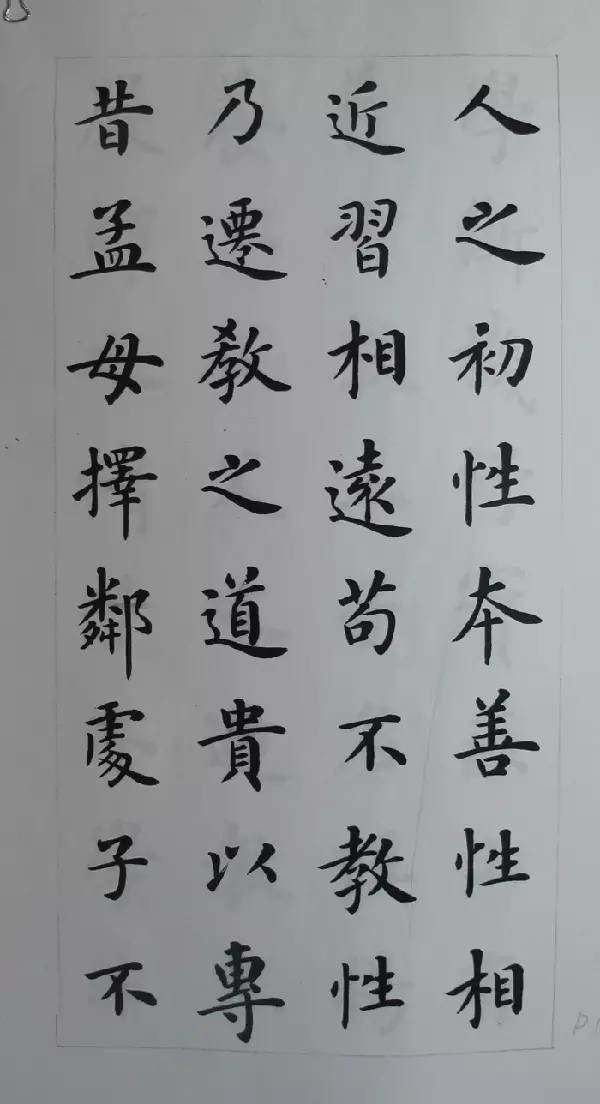
Part of "Three Character Classic" in regular script by Lu Zhongnan
2. At the end of 1972, by chance, I was mobilized by recruiting cadres to join the army. When I first arrived in the army, my leader asked me to learn to play basketball, but I couldn't play and my eyesight was not very good. After working as a "bench player" for several months, my boss saw that I was not a basketball player and knew that I had a foundation in painting and writing, so he sent me to study in the military surveying and mapping training class.
After graduation, I was often seconded by the training department of the Military Division to help plot various military maps. I also mastered some commonly used writing skills in regular script, official script, New Wei script, and imitation Song style characters. At that time, in addition to studying all kinds of copybooks we could find, we also mastered the method of writing linear calligraphy with brushes, oil paint pens, and whittled wood chips.
In 1977, after passing the recommendation examination, I was transferred from the field army to work in the design office of the Military Museum of the Chinese People's Revolution, where I mainly wrote various exhibition explanatory texts. It is said that Mr. Li Duo saw my statement that I was going to take the military doctorate exam and gave my approval before the leader agreed to transfer. Mr. Li Duo later reminded me more than once that although the writing of exhibition instructions for Junbo cannot be equated with calligraphy creation, one must practice regular script well, neatness is the first priority, and one must try his best to write in a way that the audience will enjoy reading. If the audience becomes tired or tired of watching, it will affect the overall effect of the exhibition. At the same time, he also warned me that I should learn more about the excellent Dharma texts of the ancients, constantly draw nutrients from them, and improve my calligraphy skills.
From 1977 to 1987, I wrote exhibition layout captions for ten years. At that time, there were neither phototypesetting machines nor computers when organizing exhibitions, so all work was done by handwriting. Because the exhibition layouts vary in height and size, I tried my best and relied on my youth and strength. In addition to sitting and standing, I sometimes had to kneel, half-squat or even lie down to write. Just like this, every day Writing two to three thousand words in regular script is commonplace. Of course, I had to have other comrades help with formatting and grid writing. At that time, most of the young commentators from the Military Museum had cooperated with me. If I hadn’t cooperated with them, I wouldn’t have been able to complete the task of typesetting, formatting, and writing by myself. .
Although handwriting is not as fast or as good as computer writing now, it is definitely a training exercise, and at least it has given me solid handwriting skills. In the 1970s and 1980s, the Military Museum hired a retired Mr. Geng Xuewen to write exhibition descriptions. When the exhibition arrangement was at its most stressful, Mr. Gui Zhichen and Mr. Kang Yin from the Revolution Museum were asked to help. Their regular script and Wei stele writing are very good, and I also learned a lot of experience and techniques from them.
The exhibition descriptions in the museum are mostly written in regular script, and the titles are mostly written in official script and Wei stele script. For this reason, I did spend some time writing. But at that time, my understanding was a bit extreme, and I believed that only after writing regular script could I write other calligraphy styles well, so I only focused on writing regular script. I only recognized Ouyang Xun's "Jiucheng Palace Liquan Ming" and ignored other regular scripts.
Now that I think about it, although the regular script I wrote at that time did not have any major structural problems, the main problem was that the writing style was too simple, the structure was too long, and it was too thin, hard, and strong, neglecting the fullness and roundness of the strokes, which made it look a bit frugal.
The crux of the problem is that I did not conduct an in-depth analysis and true understanding of Ouyang Xun's regular script, but only imitated the glyphs. This I only gradually realized in my subsequent studies. At that time, Liu Han, the director of the Military Museum, told me that your regular script is neat and straight, but it is too thin, and the edges of the strokes are too long and not subtle enough. He also gave me a manuscript of a poem in regular script written by a recent scholar named Hua Shikui for me to study.
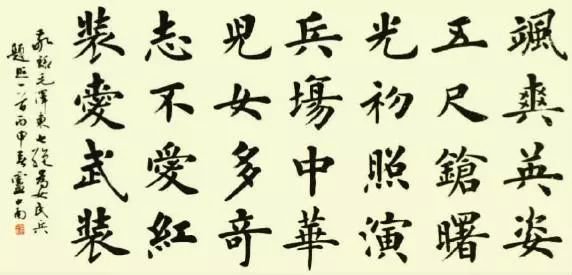
Mr. Zhu Shouyou, who was working in the Shenyang Military Region at that time, was often invited to the Military Expo to help organize exhibitions and wrote exhibition descriptions with me. More than once, he earnestly suggested that I should study more excellent classics. In addition to writing European calligraphy well, I should especially study Yu Shinan's "Confucius Temple Stele".
Later, my friend Zhang Xuguang also suggested that I study this stele temporarily, saying that this would avoid writing the word "OU" too tightly. Although I promised it verbally, I didn't agree with it in my heart. I still thought it was not as good as Ouyang Xun's writing. To be honest, I didn’t pay attention to this monument until I was on vacation this year. Of course, in addition to thanking them for their insightful suggestions, I also regretted learning it so late that it took nearly thirty years to understand it. Learning Ouyang Xun's regular script is the most difficult to write vividly, but from Yu Shinan's calligraphy we can feel the legacy of Wang Xizhi and the grace, magnanimity and calmness of regular script in the early Tang Dynasty.
In 1979, Mr. Kang Yin was invited to the Military Expo to help write exhibition descriptions. When I saw him standing in front of the layout, holding an ink plate, and meticulously writing very straight European characters, I admired him very much and quietly learned his calligraphy. He also warned me that I should not always imitate the works of modern people, but should study more of the works of ancient masters, so as not to write "craftsman" in Chinese characters.
Marx once quoted Tacitus in "History": "When you can think what you want to think, and can say what you think, this is a very happy time." February 1987 In the second half of the year, the leaders of the Military Museum invited Mr. Qi Gong to come to the museum to create large-scale calligraphy works for the conference hall. The leaders assigned me to serve Mr. Qi Gong.
When the leader introduced my work to Mr. Qi, Mr. Qi suddenly turned his head and asked me puzzledly: "Why do you like writing regular script?" I replied: "First, it is necessary for work, and second, I have liked it since I was a child. Practice, if you are interested." After listening to this, he pondered for a moment, and then said to me in a low voice with a solemn expression: "Writing regular script is thankless!" I remember that I was very excited at the time and said loudly to Mr. Qi: "You Don't worry, I will write it to the end!" After hearing this, Mr. Qi smiled kindly and nodded. I took the opportunity to ask Mr. Qi again: "Can you take the time to write me a few words?" He smiled and said: "Yes, please take the time." The leader also laughed beside me and said that I was really good at "taking advantage of loopholes."
On February 22, at my request, Mr. Qi wrote the six words "Yun Cong Long Feng Cong Hu" on the album page for me. After writing, he said to me: "I didn't include a small chapter this time. I will add it later." Let's do it." Unfortunately, due to busy work and fear of disturbing Mr. Qi, this wish was never realized until his death.
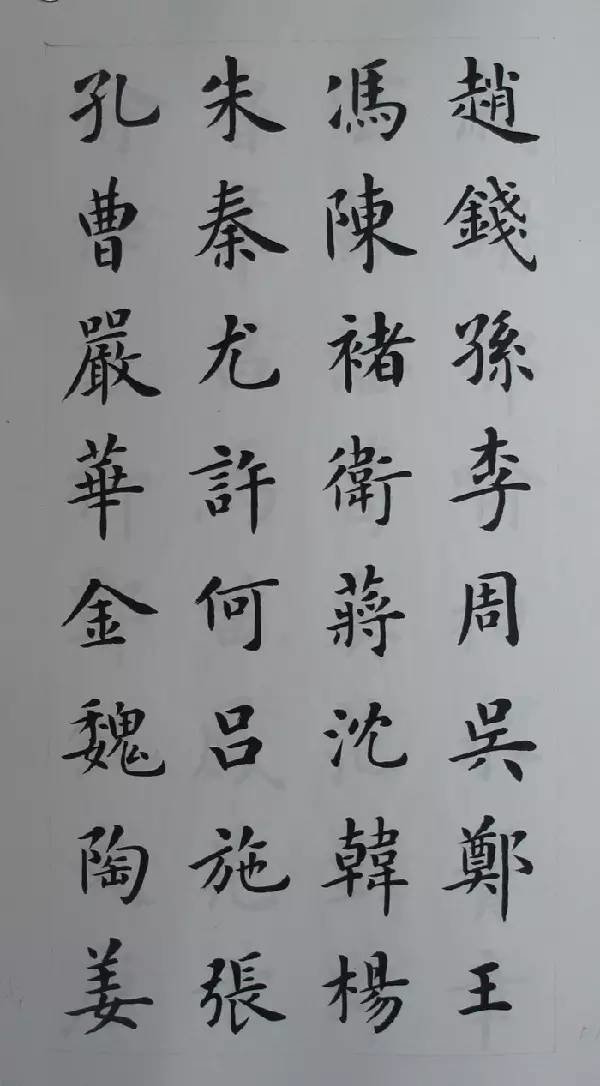
Part of "Hundred Family Surnames" in regular script by Lu Zhongnan
3. I was supposed to be a junior high school graduate in 1967, but from the second half of 1966 to 1968 I could not continue to go to school. In November 1968, I went to the countryside of Baiyangdian, Hebei Province to work as a farmer. In addition to doing farm work, I also secretly read some books in my spare time. Since I have always been fond of literature, history and philosophy, and was influenced by my classmates in the same village, I once taught myself Russian, painting, and writing, but I achieved nothing.
Later, the village leader asked me to teach as a substitute for the village. This way I did not have to work in the fields and had more time to study and practice calligraphy. When I jumped in line, some classmates advised me to work more on calligraphy, which was in line with my personality and interests.
In the first half of 1985, Mr. Lin Xiu suggested at an event that Tian Yingzhang and I apply for the calligraphy junior college class held by the Education Institute of Beijing Normal University. It just so happened that I had just finished tutoring for high school cultural classes at Beijing No. 13 Middle School, and I took part in the adult college entrance examination that year. In this way, from 1985 to 1987, I studied under Mr. Ouyang Zhongshi and other teachers for two years, and began to systematically contact and learn various cultural knowledge related to calligraphy, and began to have a completely new understanding of calligraphy.
During school, Mr. Ouyang Zhongshi organized our class to go to Tai'an, Shandong Province for a field trip. At a pen meeting, I wrote the four words "Shenzi Yuexiu" based on my experience of studying "Zhang Menglong Monument", and it felt very good. While I was admiring myself, I suddenly turned around and saw Mr. Ouyang standing behind me, holding a cane and staring at me seriously. I was about to ask Mr. Ouyang for his opinion, but he walked straight forward without looking at me. After taking a few steps, he turned around and said only five words to me: "It's better to learn from Europe." Although his voice was not high, the tone was strong enough to make me feel like I had been hit by a stick, and I was immediately speechless. , stood by the table for a long time before Men'er woke up.
Afterwards, my husband called me aside and said to me in a serious voice, I have no objection to you learning the stele. The Zhang Menglong stele is very good, but when you learn European, you should pay more attention to where the word "欧" comes from. Many people write that Ou Duo sought business from the Wei stele and easily went to the Wei stele. In fact, the word "Ou" mainly comes from "two kings". His advice made me wake up from a dream.
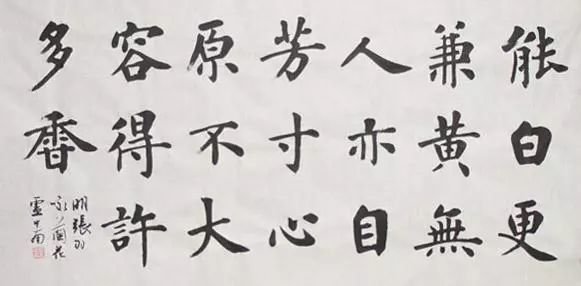
In 1986, when the Chinese Calligraphy Association and CCTV held a national television calligraphy competition, I tried to submit a European-style work, and unexpectedly won the first prize. Later, when Mr. Ouyang and Mr. Lin Xiu met me, they not only affirmed in person but also pointed out my shortcomings. They thought that the composition of the horizontal regular script work I wrote was not handled properly. The word spacing should be smaller than the line spacing. As a result, I write all the same.
It was time to graduate in 1987. Two years of study made me gain a lot in all aspects. What thesis topic should I choose? Although I have many ideas in my mind, I can’t make up my mind at the moment. A classmate suggested that if you have been studying Ou, you should choose what you are best at writing. Mr. Ouyang and other teachers such as Wang Shizheng and Jin Yunchang also agreed. I combined my own experience and collected information to complete the thesis on Ouyang Xun's "Jiucheng Palace Liquan Inscription" and its calligraphy artistic characteristics.
I remember that my husband gave this paper a "good" rating. He said that he had experience studying Europe, but the article was not organized and was a bit messy. I understand that this is not only encouragement from my husband, but also pointed out my weakness. Just being able to write is not enough. I must improve my comprehensive cultural quality and writing ability.
Over the years, I have been fully aware that my weakness is insufficient theoretical cultivation and lack of perseverance to delve into theory in depth. There is a tendency in my thinking to emphasize practice and ignore theory. Therefore, although I have more practical foundation and certain skills, I lack more theoretical guidance. As a result, I have had some confusions and taken some detours in the process of learning calligraphy, such as copying less ancient works, copying cursive scripts less, and not copying cursive scripts well. He knows seal script, but he can't do seal cutting, etc. These need to be supplemented slowly in the future.
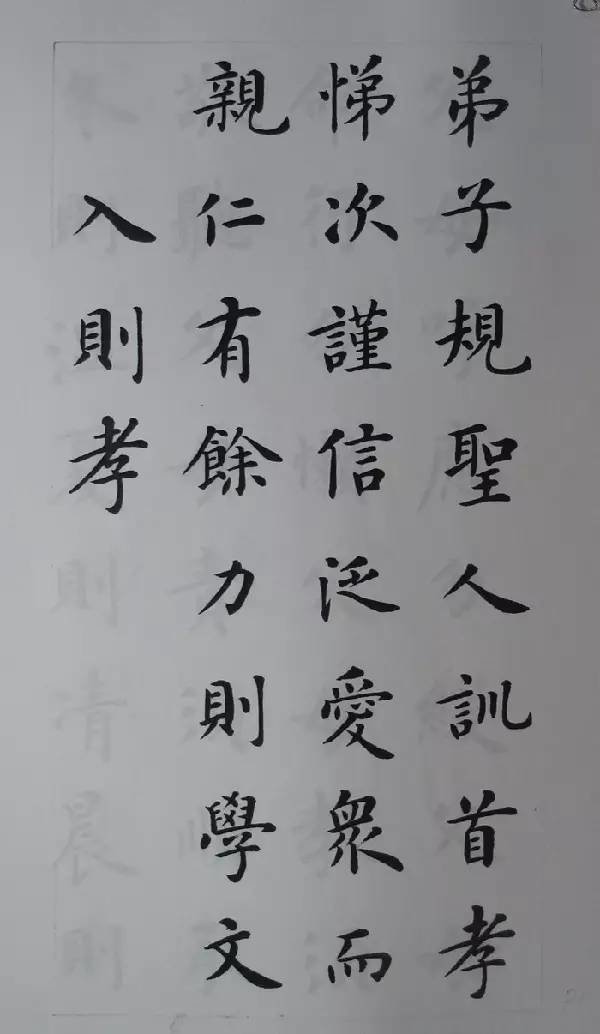
Part of Lu Zhongnan's "Disciple Regulations" in regular script
4. In the early 1990s, a friend asked a blind fortune teller to tell me a fortune, saying that I would have to deal with pen and ink in my life. I didn't take it seriously at the time and just smiled. Thinking about it now, it seems that fate really agreed with the fortune teller's words.
I like to write, and I like to copy classic regular script even more. I have a special liking for Ouyang Xun's regular script art. This may also be related to my personality. I am willing to shut myself in the study room and concentrate on writing and reading. I like to quietly appreciate ancient calligraphy in exhibition halls or halls alone, capture the beauty of lines with my eyes, and comprehend the beauty of words with my heart. , there is no need to explain any concepts or criticize any isms.
I know very well that the copying I do day after day, although monotonous and mediocre, is the foundation and the only way to learn the art of calligraphy. Ancient Chinese calligraphers did have a lot of unique and unique things, but their skills are absolutely indispensable. Wang Xizhi, Ouyang Xun, Yan Zhenqing, Wang Duo, Zhu Da and other calligraphers all have superb calligraphy skills.
I have been writing regular script for decades, and only I know the joys and sorrows in it. Gains and confusion coexist, and prejudices are gradually clarified during the practice. Ordinarily, I should have made a lot of progress, but I still feel that writing in regular script is too difficult. The more I write, the less courage I get, and I don’t seem to dare to go too far. Many calligraphy works are produced in every era, but most of them have disappeared without a trace. Only a small part of them remain. Due to people's love, collection and passing down from generation to generation, these remaining works are gold mining in the sand and classics. It’s a cornucopia, and you won’t be able to finish it all in your lifetime.

Not to mention transcendence, at least in addition to learning and mastering the calligraphy skills of the ancients, you should also understand why you write like the ancients. These all require in-depth thinking. Until now, I can't explain the reasons at once. Therefore, only by analyzing and researching with awe can we gain something. Of course, a serious regular script seems to be too rigid to sit upright, but it may not be convincing to people just letting the pen shape and writing whatever it is called calligraphy.
Goethe once said: "If you can't understand something, you can't possess it." Especially classic works cannot be mastered easily, let alone dabble in them. Maybe you have often copied it in the past and are familiar with it, but if you look at it after a while, you will still have new feelings. This is the charm of classics.
I recently revisited Ouyang Xun's "Jiucheng Palace Liquan Ming". Not only did I discover new things that I had not noticed in the past, but I also gained a new perspective on the European regular script. U.S. President Obama said in his book "The Audacity of Hope" that "a country that cannot control its own energy cannot control its own future." I would like to borrow his words. People who study calligraphy should also regard ancient calligraphy classics as "energy." ”, if you cannot learn and utilize this “energy” well, you will also not be able to control your own future. On this issue, we have no room for hesitation.
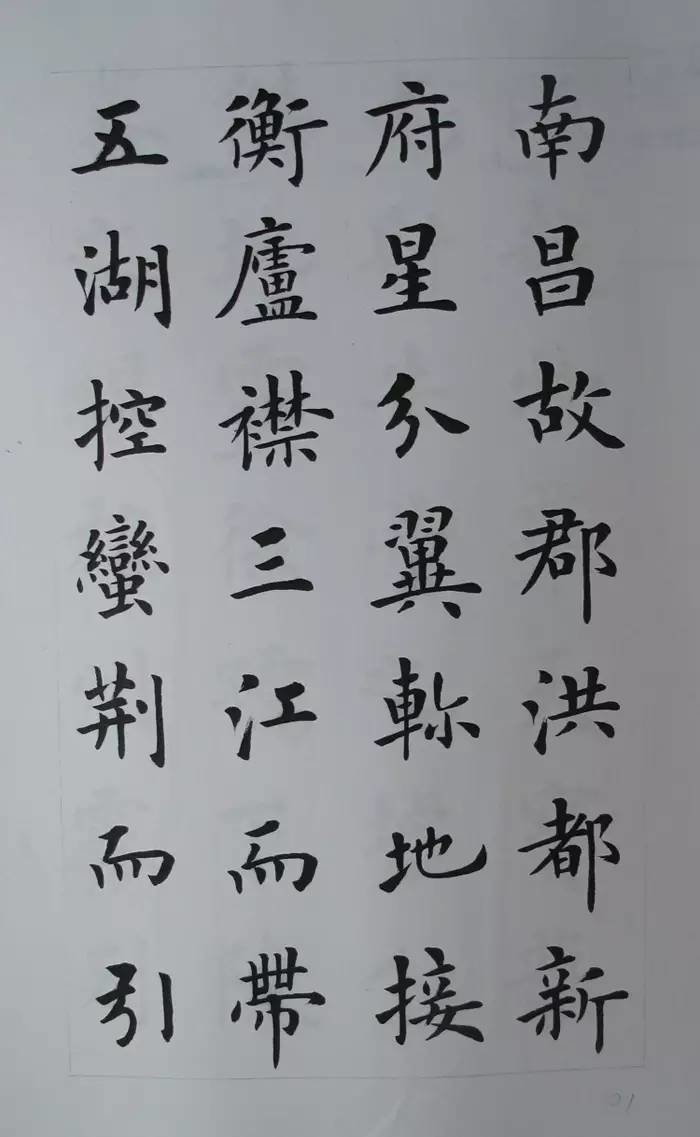
Part of "Preface to Prince Teng's Pavilion" in regular script by Lu Zhongnan
5. One day I was reading the "People's Political Consultative Conference" and talked about the art of the famous cross talk actor Ma Sanli, and I was very moved. Special excerpts are as follows:
Ma Sanli was born in Beijing in 1914. He learned art from his father Ma Delu at the age of 12. After graduating from junior high school at the age of 15, he became a teacher of Zhou Deshan (Zhou Toad), specializing in cross talk. He can tell more than 200 traditional jokes, all of which are good at speaking. This is the outstanding feature of Mapai cross talk. His cross talk art is very popular among the people. Listening to his cross talk is like chatting, seemingly careless, casual, free and real, vivid and without any trace. He was serious, but you burst out laughing. Very ordinary language, once he spoke it, it immediately came alive. This is the artistic charm of cross talk. The cross talk circle believes that the highest level of art is "knowledge and refinement", and Ma Sanli's art has indeed reached the level of "purification". Even the most picky connoisseurs cannot help but admire his proficiency that he has cultivated through many years of hard work. He once solemnly explained the meaning of his name: "An ancient book says: A gentleman has three principles: establishing virtue, establishing merit, and establishing words. I hope that I will always work hard in this direction in my life."
A few years ago, when I discussed some ideas about learning regular script with Mr. Ouyang Zhongshi, I said that I only have one intention, which is to keep writing regular script. After hearing what I said, Mr. Ouyang asked me calmly: "Then what else do you want to do?" I was speechless for a moment...
Later, when I was walking on the ever-flowing road and looking at the bustling crowds, I somehow suddenly remembered the scene of planting rice with the fellow villagers when I was jumping in line in Baiyangdian. When I first learned to plant rice seedlings, I looked around for fear that they would be uneven, but I still planted them crookedly. Seeing the fellows thrusting straight and fast, I asked for advice on how to do it like them. A fellow villager told me that when planting rice seedlings, you should keep your eyes on a fixed object in front of you, don't mess with your hands and feet, and just take your time. I tried it according to the method they taught, and it was indeed different. The insertion was really neat and tidy. Of course, the speed is still not as good as others.
No matter what, I understand: if you set a goal in your eyes, you will know it in your heart. Although inferior to others, his hands never stop. As long as you learn with an open mind, you will find your own path.








